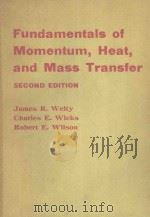《FUNDAMENTALS OF HEAT AND MASS TRANSFER》
| 作者 | FRANK P.INCROPERA DAVID P.DEW 编者 |
|---|---|
| 出版 | JOHN WILEY & SONS |
| 参考页数 | 970 |
| 出版时间 | 没有确切时间的资料 目录预览 |
| ISBN号 | 无 — 求助条款 |
| PDF编号 | 819588818(仅供预览,未存储实际文件) |
| 求助格式 | 扫描PDF(若分多册发行,每次仅能受理1册) |
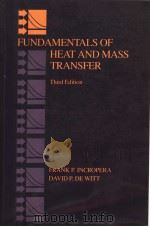
Chapter 1INTRODUCTION1
1.1 What and How?2
1.2 Physical Origins and Rate Equations3
1.2.1 Conduction3
1.2.2 Convection6
1.2.3 Radiation9
1.2.4 Relationship to Thermodynamics13
1.3 The Conservation of Energy Requirement13
1.3.1 Conservation of Energy for a Control Volume14
1.3.2 The Surface Energy Balance19
1.3.3 Application of the Conservation Laws:Methodology21
1.4 Analysis of Heat Transfer Problems:Methodology22
1.5Relevance of Heat Transfer23
1.6 Units and Dimensions24
1.7Summary27
Problems29
Chapter 2INTRODUCTION TO CONDUCTION43
2.1 The Conduction Rate Equation44
2.2 The Thermal Properties of Matter46
2.2.1 Thermal Conductivity47
2.2.2 Other Relevant Properties51
2.3The Heat Diffusion Equation53
2.4 Boundary and Initial Conditions62
2.5Summary65
References66
Problems66
Chapter 3ONE-DIMENSIONAL,STEADY-STATE CONDUCTION79
3.1The Plane Wall80
3.1.1 Temperature Distribution80
3.1.2 Thermal Resistance82
3.1.3 The Composite Wall84
3.1.4 Contact Resistance86
3.2 An Alternative Conduction Analysis92
3.3Radial Systems96
3.3.1 The Cylinder97
3.3.2 The Sphere103
3.4 Summary of One-Dimensional Conduction Results107
3.5Conduction with Thermal Energy Generation108
3.5.1 The Plane Wall108
3.5.2 Radial Systems114
3.5.3 Application of Resistance Concepts119
3.6 Heat Transfer from Extended Surfaces119
3.6.1 A General Conduction Analysis122
3.6.2 Fins of Uniform Cross-Sectional Area123
3.6.3 Fin Performance130
3.6.4 Overall Surface Efficiency134
3.6.5 Fin Contact Resistance138
3.7Summary141
References142
Problems142
Chapter 4TWO-DIMENSIONAL,STEADY-STATE CONDUCTION171
4.1 Alternative Approaches172
4.2 The Method of Separation of Variables173
4.3The Graphical Method177
4.3.1 Methodology of Constructing a Flux Plot178
4.3.2 Determination of the Heat Transfer Rate179
4.3.3 The Conduction Shape Factor180
4.4 Finite-Difference Equations184
4.4.1 The Nodal Network185
4.4.2 Finite-Difference Form of the Heat Equation185
4.4.3 The Energy Balance Method187
4.5Finite-Difference Solutions194
4.5.1 The Matrix Inversion Method194
4.5.2 Gauss-Seidel Iteration200
4.5.3 Some Precautions203
4.6Summary203
References204
Problems204
Chapter 5TRANSIENT CONDUCTION225
5.1 The Lumped Capacitance Method226
5.2 Validity of the Lumped Capacitance Method229
5.3 General Lumped Capacitance Analysis234
5.4 Spatial Effects237
5.5 The Plane Wall with Convection239
5.5.1 Exact Solution239
5.5.2 Approximate Solution240
5.5.3 Total Energy Transfer240
5.5.4 Graphical Representations242
5.6Radial Systems with Convection245
5.6.1 Exact Solutions245
5.6.2 Approximate Solutions246
5.6.3 Total Energy Transfer247
5.6.4 Graphical Representation249
5.7 The Semi-infinite Solid259
5.8 Multidimensional Effects263
5.9 Finite-Difference Methods270
5.9.1 Discretization of the Heat Equation:The Explicit Method271
5.9.2 Discretization of the Heat Equation:The Implicit Method279
5.10 Summary287
References287
Problems288
Chapter 6INTRODUCTION TO CONVECTION312
6.1 The Convection Transfer Problem312
6.2 The Convection Boundary Layers318
6.2.1 The Velocity Boundary Layer318
6.2.2 The Thermal Boundary Layer319
6.2.3 The Concentration Boundary Layer320
6.2.4 Significance of the Boundary Layers323
6.3Laminar and Turbulent Flow324
6.4 The Convection Transfer Equations326
6.4.1 The Velocity Boundary Layer326
6.4.2 The Thermal Boundary Layer331
6.4.3 The Concentration Boundary Layer335
6.5 Approximations and Special Conditions341
6.6 Boundary Layer Similarity:The Normalized Convection Transfer Equations343
6.6.1 Boundary Layer Similarity Parameters344
6.6.2 Functional Form of the Solutions346
6.7 Physical Significance of the Dimensionless Parameters351
6.8 Boundary Layer Analogies355
6.8.1 The Heat and Mass Transfer Analogy355
6.8.2 Evaporative Cooling359
6.8.3 The Reynolds Analogy363
6.9 The Effects of Turbulence364
6.10 The Convection Coefficients367
6.11 Summary368
References368
Problems369
Chapter 7EXTERNAL FLOW385
7.1 The Empirical Method387
7.2 The Flat Plate in Parallel Flow389
7.2.1 Laminar Flow:A Similarity Solution389
7.2.2 Turbulent Flow396
7.2.3 Mixed Boundary Layer Conditions397
7.2.4 Special Cases399
7.3Methodology for a Convection Calculation401
7.4 The Cylinder in Cross Flow408
7.4.1 Flow Considerations408
7.4.2 Convection Heat and Mass Transfer411
7.5 The Sphere417
7.6 Flow Across Banks of Tubes420
7.7 Impinging Jets431
7.7.1 Hydrodynamic and Geometric Considerations431
7.7.2 Convection Heat and Mass Transfer433
7.8 Packed Beds438
7.9 Summary440
References441
Problems442
Chapter 8INTERNAL FLOW467
8.1 Hydrodynamic Considerations468
8.1.1 Flow Conditions468
8.1.2 The Mean Velocity469
8.1.3 Velocity Profile in the Fully Developed Region470
8.1.4 Pressure Gradient and Friction Factor in Fully Developed Flow472
8.2 Thermal Considerations474
8.2.1 The Mean Temperature475
8.2.2 Newton’s Law of Cooling476
8.2.3 Fully Developed Conditions476
8.3 The Energy Balance480
8.3.1 General Considerations480
8.3.2 Constant Surface Heat Flux482
8.3.3 Constant Surface Temperature485
8.4 Laminar Flow in Circular Tubes:Thermal Analysis and Convection Correlations489
8.4.1 The Fully Developed Region489
8.4.2 The Entry Region494
8.5 Convection Correlations:Turbulent Flow in Circular Tubes495
8.6 Convection Correlations:Noncircular Tubes501
8.7 The Concentric Tube Annulus502
8.8 Heat Transfer Enhancement504
8.9 Convection Mass Transfer505
8.10 Summary507
References509
Problems510
Chapter 9FREE CONVECTION529
9.1 Physical Considerations530
9.2 The Governing Equations533
9.3 Similarity Considerations535
9.4 Laminar Free Convection on a Vertical Surface536
9.5 The Effects of Turbulence539
9.6 Empirical Correlations:External Free Convection Flows541
9.6.1 The Vertical Plate542
9.6.2 Inclined and Horizontal Plates546
9.6.3 The Long Horizontal Cylinder550
9.6.4 Spheres553
9.7Free Convection within Parallel Plate Channels555
9.7.1 Vertical Channels555
9.7.2 Inclined Channels558
9.8 Empirical Correlations:Enclosures558
9.8.1 Rectangular Cavities559
9.8.2 Concentric Cylinders562
9.8.3 Concentric Spheres563
9.9 Combined Free and Forced Convection566
9.10 Convection Mass Transfer567
9.11 Summary567
References568
Problems570
Chapter 10 BOILING AND CONDENSATION587
10.1Dimensionless Parameters in Boiling and Condensation588
10.2 Boiling Modes589
10.3Pool Boiling590
10.3.1 The Boiling Curve590
10.3.2 Modes of Pool Boiling592
10.4 Pool Boiling Correlations596
10.4.1 Nucleate Pool Boiling596
10.4.2 Critical Heat Flux for Nucleate Pool Boiling597
10.4.3 Minimum Heat Flux598
10.4.4 Film Pool Boiling599
10.4.5 Parametric Effects on Pool Boiling600
10.5Forced-Convection Boiling606
10.5.1 External Forced-Convection Boiling606
10.5.2 Two-Phase Flow607
10.6 Condensation:Physical Mechanisms608
10.7 Laminar Film Condensation on a Vertical Plate610
10.8 Turbulent Film Condensation615
10.9 Film Condensation on Radial Systems619
10.10 Film Condensation in Horizontal Tubes622
10.11 Dropwise Condensation623
10.12 Summary624
References624
Problems627
Chapter 11 HEAT EXCHANGERS639
11.1 Heat Exchanger Types640
11.2 The Overall Heat Transfer Coefficient642
11.3 Heat Exchanger Analysis:Use of the Log Mean Temperature Difference645
11.3.1 The Parallel-Flow Heat Exchanger646
11.3.2 The Counterflow Heat Exchanger649
11.3.3 Special Operating Conditions650
11.3.4 Multipass and Cross-Flow Heat Exchangers650
11.4 Heat Exchanger Analysis:The Effectiveness-NTU Method658
11.4.1 Definitions658
11.4.2 Effectiveness-NTU Relations660
11.5 Methodology of a Heat Exchanger Calculation666
11.6 Compact Heat Exchangers672
11.7 Summary678
References679
Problems680
Chapter 12 RADIATION:PROCESSES AND PROPERTIES695
12.1 Fundamental Concepts696
12.2 Radiation Intensity699
12.2.1 Definitions699
12.2.2 Relation to Emission702
12.2.3 Relation to Irradiation706
12.2.4 Relation to Radiosity708
12.3 Blackbody Radiation709
12.3.1 The Planck Distribution710
12.3.2 Wien’s Displacement Law712
12.3.3 The Stefan-Boltzmann Law712
12.3.4 Band Emission713
12.4 Surface Emission719
12.5 Surface Absorption,Reflection,and Transmission729
12.5.1 Absorptivity731
12.5.2 Reflectivity732
12.5.3 Transmissivity734
12.5.4 Special Considerations734
12.6 Kirchhoff’s Law740
12.7 The Gray Surface742
12.8 Environmental Radiation749
12.9 Summary756
References758
Problems759
Chapter 13 RADIATION EXCHANGE BETWEEN SURFACES791
13.1 The View Factor792
13.1.1 The View Factor Integral792
13.1.2 View Factor Relations794
13.2 Blackbody Radiation Exchange803
13.3 Radiation Exchange Between Diffuse,Gray Surfaces in an Enclosure806
13.3.1 Net Radiation Exchange at a Surface806
13.3.2 Radiation Exchange Between Surfaces808
13.3.3 The Two-Surface Enclosure814
13.3.4 Radiation Shields816
13.3.5 The Reradiating Surface819
13.4 Multimode Heat Transfer824
13.5 Additional Effects827
13.5.1 Volumetric Absorption828
13.5.2 Gaseous Emission and Absorption829
13.6 Summary833
References833
Problems834
Chapter 14 DIFFUSION MASS TRANSFER871
14.1 Physical Origins and Rate Equations872
14.1.1 Physical Origins872
14.1.2 Mixture Composition873
14.1.3 Fick’s Law of Diffusion875
14.1.4 Restrictive Conditions875
14.1.5 Mass Diffusion Coefficient880
14.2 Conservation of Species880
14.2.1 Conservation of Species for a Control Volume881
14.2.2 The Mass Diffusion Equation881
14.3 Boundary and Initial Conditions884
14.4 Mass Diffusion Without Homogeneous Chemical Reactions888
14.4.1 Stationary Media with Specified Surface Concentrations889
14.4.2 Stationary Media with Catalytic Surface Reactions893
14.4.3 Equimolar Counterdiffusion896
14.4.4 Evaporation in a Column900
14.5 Mass Diffusion with Homogeneous Chemical Reactions902
14.6 Transient Diffusion906
References910
Problems911
Appendix A THERMOPHYSICAL PROPERTIES OF MATTER921
Appendix B MATHEMATICAL RELATIONS AND FUNCTIONS953
Appendix C AN INTEGRAL LAMINAR BOUNDARY LAYER SOLUTION FOR PARALLEL FLOW OVER A FLAT PLATE959
Index965
《FUNDAMENTALS OF HEAT AND MASS TRANSFER》由于是年代较久的资料都绝版了,几乎不可能购买到实物。如果大家为了学习确实需要,可向博主求助其电子版PDF文件(由FRANK P.INCROPERA DAVID P.DEW JOHN WILEY & SONS 出版的版本) 。对合法合规的求助,我会当即受理并将下载地址发送给你。
高度相关资料
-
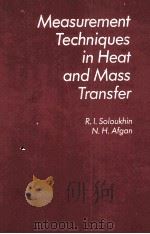
- MEASUREMENT TECHNIQUES IN HEAT AND MASS TRANSFER
- 1985 SPRINGER-VERLAG
-

- FUNDAMENTALS OF HEAT AND MASS TRANSFER
- JOHN WILEY & SONS
-
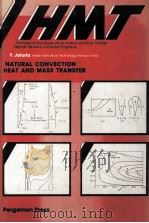
- Natural Convection Heat and Mass Transfer
- 1980 Pergamon Press.
-
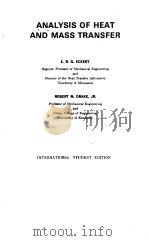
- ANALYSIS OF HEAT AND MASS TRANSFER
- 1972 McGRAW-HILL KOGAKUSHA LTD
-
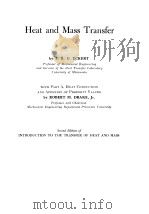
- Heat and Mass Transfer
- 1959 McGRAW-HILL BOOK COPMANY INC
-
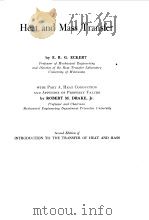
- Heat and Mass Transfer
- 1959 McGRAW-HILL BOOK COPMANY INC
-
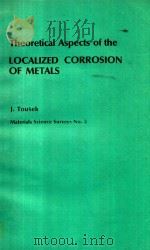
- THEORETICAL ASPECTS OF THE LOCALIZED CORROSION OF METALS
- 1985 TRANS TECH PUBLICATIONS
-
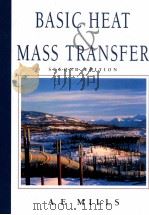
- Basic heat and mass transfer second edition
- 1999 PrenticeHall
-

- Convective Heat and Mass Transfer
- 1966 McGraw-Hill Book Company.
-

- HEAT AND MASS TRANSFER
- 1980 MIR PUBLISHERS
-

- HEAT AND MASS TRANSFER
- 1978 TAT MCGRAW-HILL PUBLISHING CO.LTD.
-
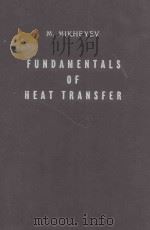
- FUNDAMENTALS OF HEAT TRANSFER
- PEACE PUBLISHERS
提示:百度云已更名为百度网盘(百度盘),天翼云盘、微盘下载地址……暂未提供。➥ PDF文字可复制化或转WORD


